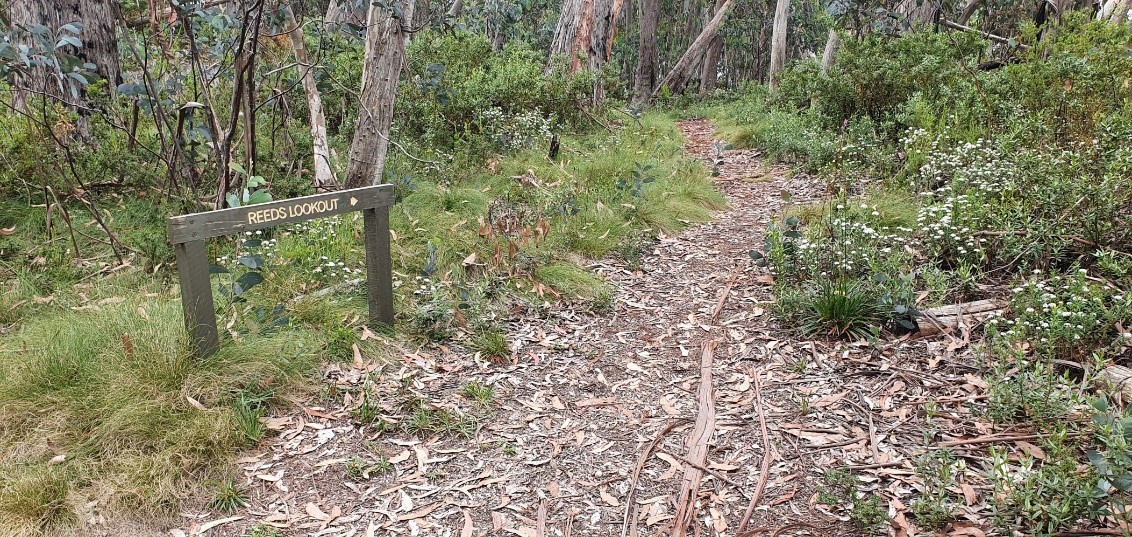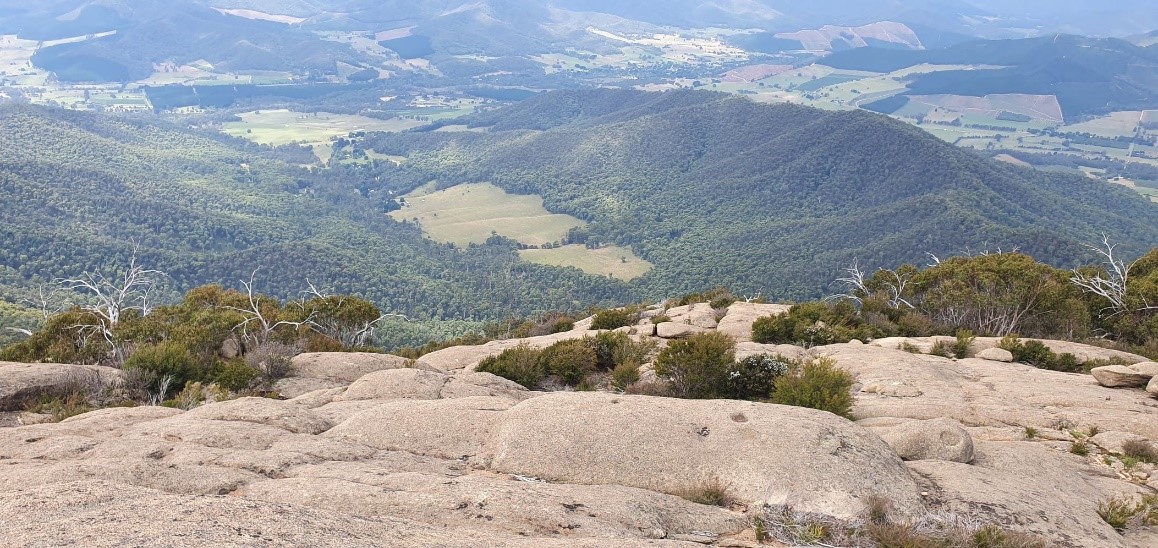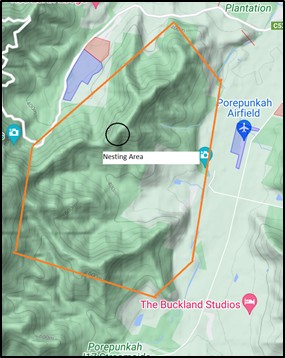Victoria > East Inland
Mt Buffalo – Reed’s Lookout Paraglider launch
| Type | Inland mountain |
| Conditions | |
| Height | 4527' / 1,380m amsl, 975m / 3,200ft agl |
| Rating | PG5, PG4 under FI/SSO supervision. Unsuitable for Hang gliders. |
Landowners
Parks Victoria. Reeds Lookout is licensed to VHPA/SAFA for use as a PG launch site.
Contact/Responsible
NEVHGCDescription
Mt Buffalo is a large granite mountain. Reed’s lookout PG launch comprises a series of large (3-4m) boulders with a surface slope of around 35-40deg off level and deep fissures between the boulders. The surface is of ‘sharp’ granite which is helpfully non-slip but can grab lines and cause wing damage if movement against the rock face is excessive. Several options for launch are available: the conditions will indicate the optimum. The drop-off in front of the boulders is sheer where it is not closed by low trees thus there is no room for error. The site is rated PG5. PG4 may only launch under FI/SSO supervision. Visitors are strongly advised to seek local knowledge before attempting to fly here.
Eagle Attacks – most wedgetail eagles in the area are friendly, however there is a grumpy eagle resident on the Buffalo Foothills who may attack paragliders. Please see Site Page>Hazards for details.
Takeoff
Access
Leave vehicles at the Crystal Brook or Cricket Oval car sidings and take the path across the Crystal Brook Falls. Follow the Big Walk (downhill) for about 15 mins and there is a sign for Reed’s Lookout to the right. The side path emerges at the lookout which overlooks the launch area.
The launch site can also be reached on foot by hiking up The Big Walk.
Launching
The launch gets the morning sun and takes the valley breeze so that conditions can be favourable first thing in light winds. The rocks warm up with the morning sun which can then create strong thermalling conditions. Any cross-wind may cause turbulence. The boulders offer only a few steps between the fissures so conditions have to be ideal for any launch to be considered. There is no room for error.
Landing
The Burrs Blue Zone immediately below launch. Porpunkah airfield across the spur to the north and east. Top landings in the Buffalo National Park are forbidden.
Flight
Cross country options are wide. Once you have climbed out there are options to reach in all directions. Before going XC, please check the siteguide for allowed and forbidden landing paddocks in the area and endeavour always to land in a Blue Zone.
Hazards / Comments
Mt Buffalo Eagles
There are many Wedge-tailed eagles resident in the Ovens Valley. The great majority are friendly, will join you in a thermal or show you where the lift is better. However, a number of eagles are territorially aggressive, will attempt to warn you out of their area and may attack your wing if you do not leave. The greatest number of such incidents have occurred in recent years in the vicinity of Little Buffalo.
The eagle’s nest is on the shoulder of Little Buffalo and the eagle has been known to patrol anywhere on that spur and the adjacent Buffalo Foothills. His patrol area is outlined in brown but he has been known to attack out in the valley as far as the airfield.
Attacks may occur at any time of year but are more frequent when the eaglets are being raised between October and March. The eagle’s job is to drive us away from his nest. If you do as he asks he probably won’t attack. Attacks have not occurred to a wing which is over 1,500m and may not occur as low as 1,100m. Heights of attacks are usually in the 800-1,000m range when wings are looking for lift on Little Buffalo or Buffalo Foothills. If flying in the area it is advised that you keep a vigilant look out. If you see the eagle, immediately turn away from him, his nesting area and the terrain.
He may pursue you, if so he will climb above and then attack your wing from behind usually going for your wing tips. You may hear him calling as he approaches – he sounds similar to a cat mewing. You may not hear that in which case the first you will know is when you feel a tug on the wing similar to a sharp thermal bubble. If you look up you will probably then see him fly past as he circles for another go. You can reduce the chance of him making contact with the wing by making steep wingovers. As he approaches from behind, pull a deep wing over on the side of his attack. He will not always be able to manoeuvre and follow the wing down and will have to circle back for another try. Keep doing that while at the same time leaving the terrain as fast as you can. As you get further out and away from his nest, it is probable that he will break off.
Damage to the wings is caused by the eagle’s three talons piercing the material and potentially tearing a section away. Damage can be anything from light nicks to the wing being a complete write off. We have no record of a wing being so damaged that it cannot be flown to a safe landing.



